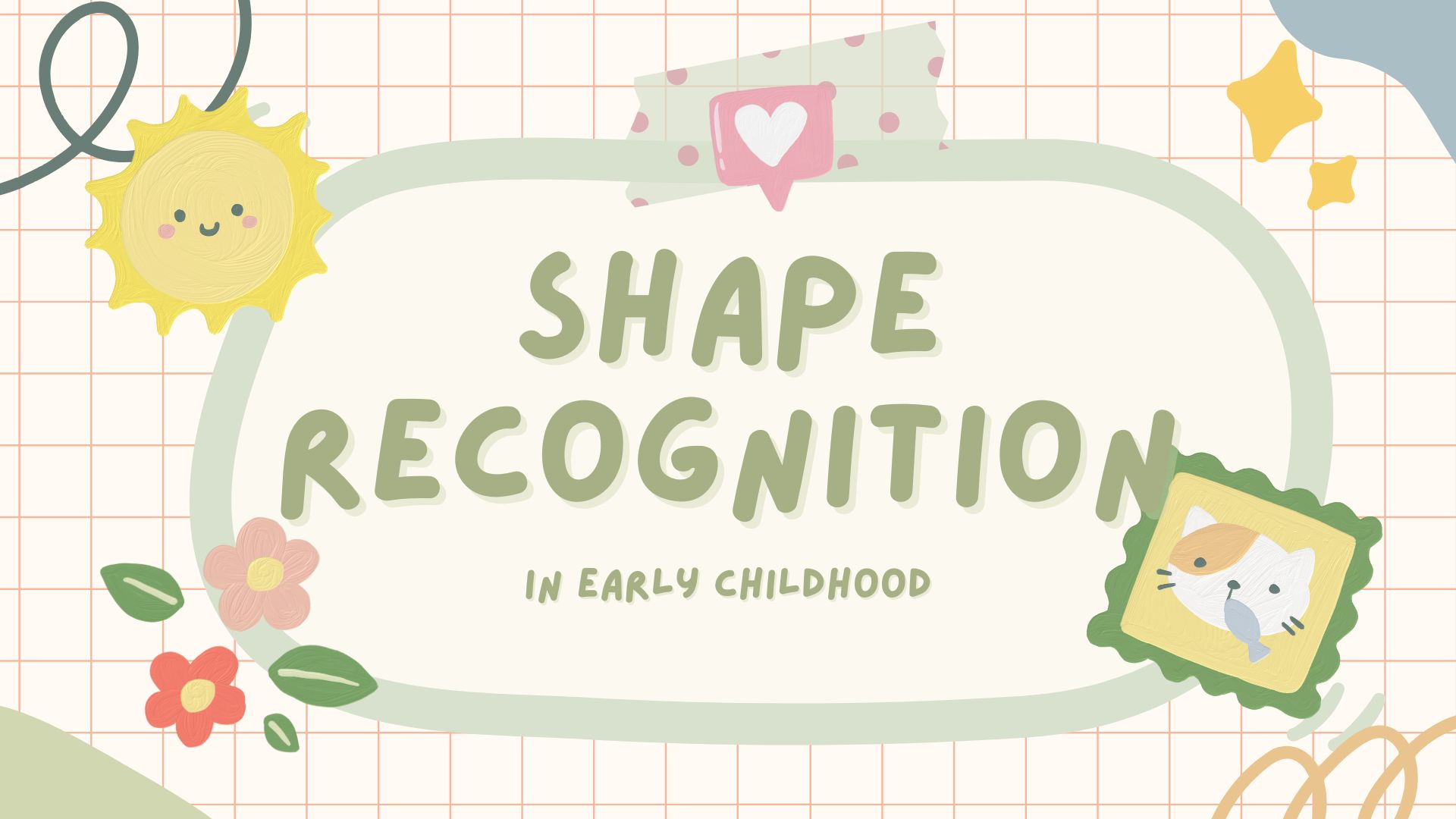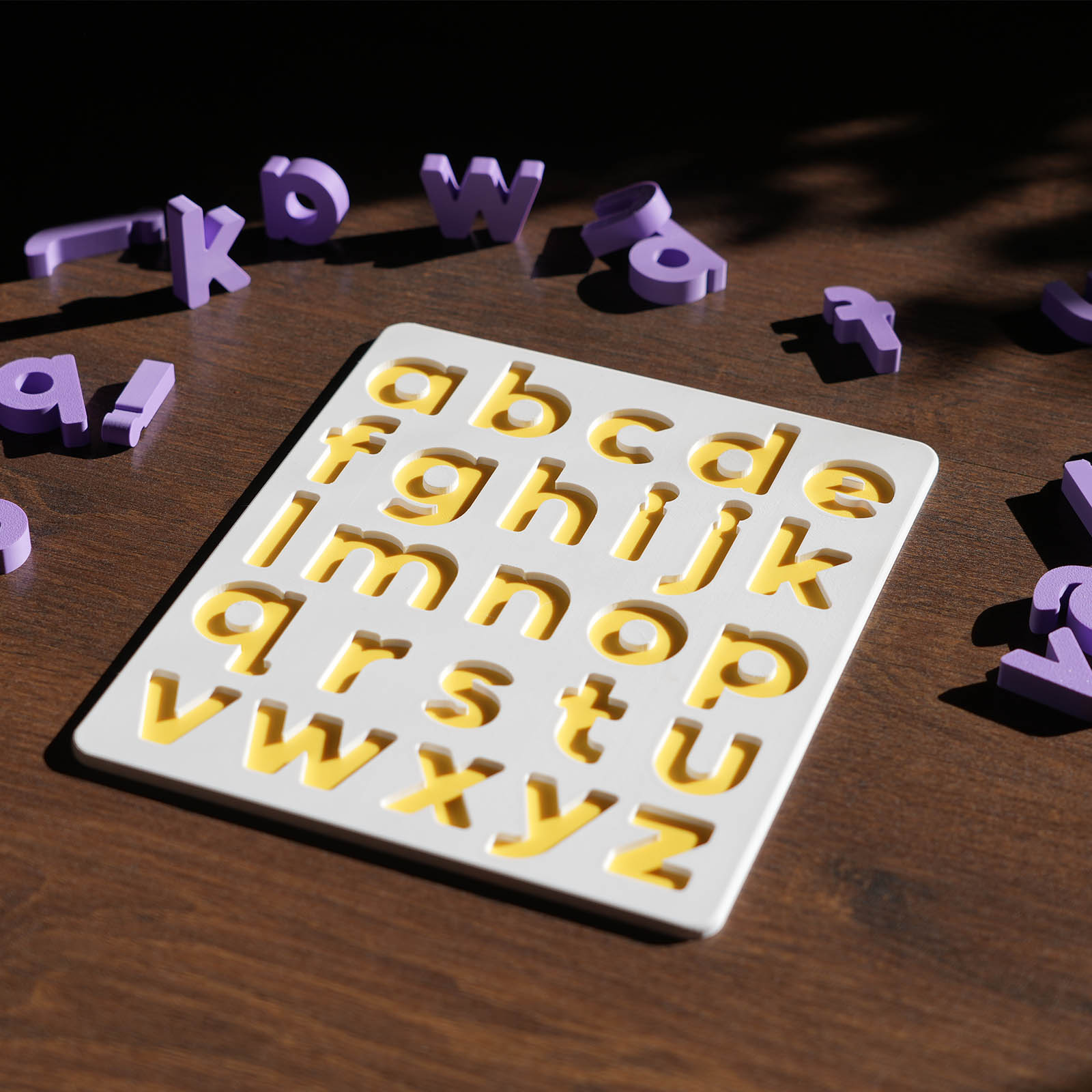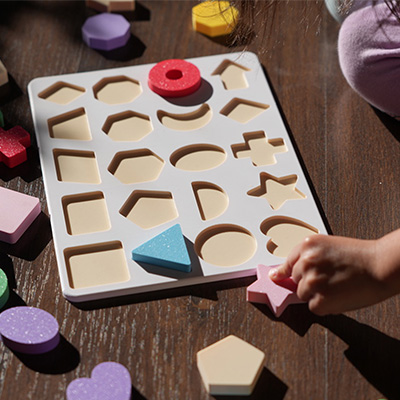🔺 Why Shape Recognition Is More Than Just Play
When your toddler learns to recognise shapes, they’re doing more than naming circles and squares — they’re building critical thinking, visual processing, and foundational skills that support both literacy and mathematics.
In early childhood education, shape recognition is a key milestone. It links to how children later understand:
- Letters and numbers
- Patterns and sequences
- Spatial reasoning
- Early logic and categorisation
It’s no surprise that shape puzzles are a favourite tool among Montessori educators — and why they’re a mainstay in play-based learning.
🧠 How Shape Recognition Builds Early Literacy
Before children read or write, they learn to:
- Discriminate shapes visually
- Identify patterns in form
- Compare and categorise symbols
These abilities are directly tied to letter recognition and early reading.
✅ Visual Discrimination and Letter Learning
Recognising a triangle vs. square helps toddlers later tell apart letters like “b” and “d” or “p” and “q”.
✅ Pattern Recognition and Word Structure
Seeing that a square has four equal sides teaches children that shapes (like letters) have rules — setting the stage for understanding the structure of words and sentences.
✅ Symbol Memory and Reading
When a toddler learns a shape by sight, they’re practising the same symbol-to-meaning memory that helps them later recognise that “D” means dog.
🔢 How Shape Recognition Supports Early Math
Shapes are also the gateway to geometry, measurement, and problem-solving.
Here’s how:
| Shape Skill | Math Skill it Supports |
|---|---|
| Identifying shapes | Early geometry |
| Grouping by size or side count | Sorting and classification |
| Fitting puzzle pieces | Spatial reasoning |
| Describing features (e.g. “three sides”) | Measurement language |
By manipulating shapes and using shape-based toys, toddlers develop spatial language, directional thinking, and the ability to work with abstract ideas — key pillars in mathematical development.
🧩 Toys That Support Shape Recognition
To help toddlers internalise shape concepts, look for toys that are:
| Feature | Benefit |
|---|---|
| Simple and uncluttered | Focuses attention on form |
| Tactile | Builds fine motor pathways and memory |
| Visually distinct | Reinforces shape identity |
| Open-ended | Encourages sorting, matching, and exploration |
At Frankie & Leo, our Geometric Puzzle is specifically designed to build shape recognition through:
- Clear-cut shapes like circles, triangles, squares, and rectangles
- Montessori-inspired calming colours
- Self-correcting layout for independent learning
It’s not just about filling spaces — it’s about building the brain.
👉 Explore the Geometric Puzzle at Frankie & Leo
🏠 At-Home Shape Activities
Reinforce shape recognition with everyday moments. Here are a few easy home-based activities:
🔹 Shape Hunt
Pick a shape and go on a scavenger hunt around the house — “Can you find something shaped like a rectangle?”
🔹 Shape Tracing
Use puzzle pieces to trace and colour on paper. You can also cut the shapes out and create matching games.
🔹 Shape Snack Time
Cut fruit or sandwiches into circles, triangles, and squares. Let your child identify the shape before they eat!
🔹 Match and Sort
Group household items by shape — lids, blocks, coins — and place them in labeled bowls or trays.
These activities don’t just teach shapes — they make shape recognition part of everyday learning.
📸 Follow for Real-Life Play Ideas
Want to see how other families use shape recognition in their play setups?
Follow us on Instagram for real-world activities, learning prompts, and calm playroom inspiration:
👉 @frankiexleo on Instagram
💬 Final Thought
Shape recognition might seem simple, but it’s a powerful early learning tool. It builds the brain’s ability to see patterns, solve problems, and interpret symbols — all of which support reading, writing, and maths.
When toddlers explore shapes through puzzles, matching, and play, they’re not just having fun. They’re laying the groundwork for school success — one shape at a time.
📚 References:
- Clements, D. H. & Sarama, J. (2011). Early Childhood Mathematics Education Research: Learning Trajectories for Young Children.
- Whitebread, D. (2012). The Importance of Play in Promoting Healthy Child Development.


